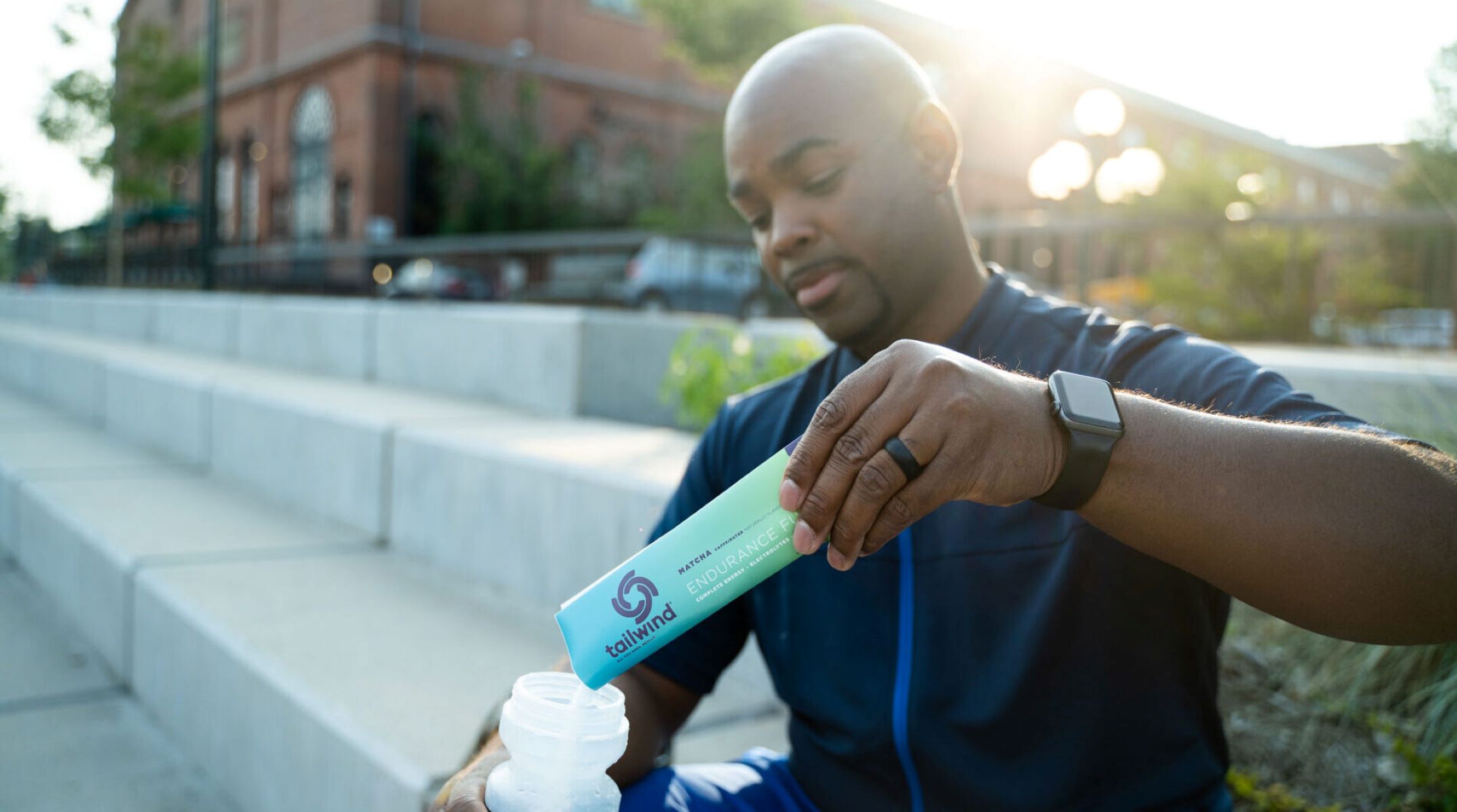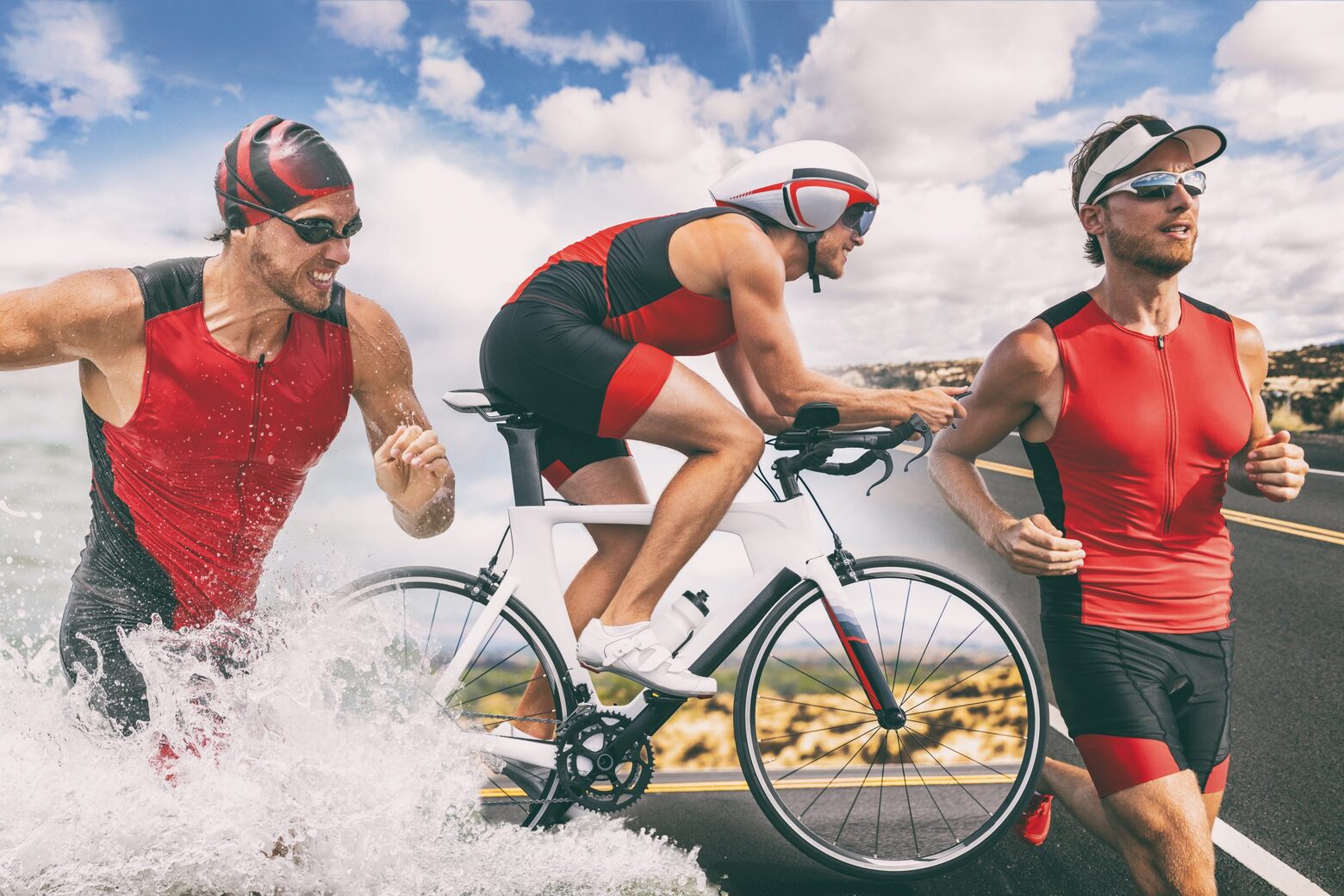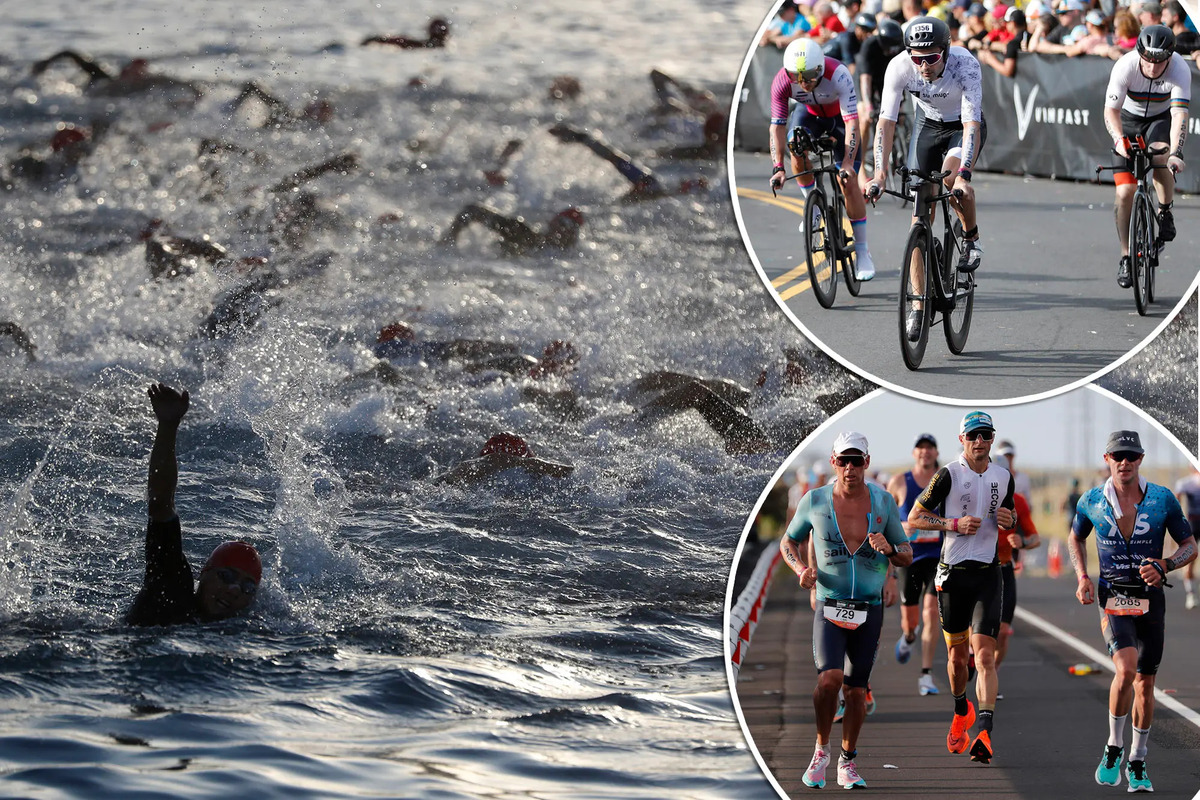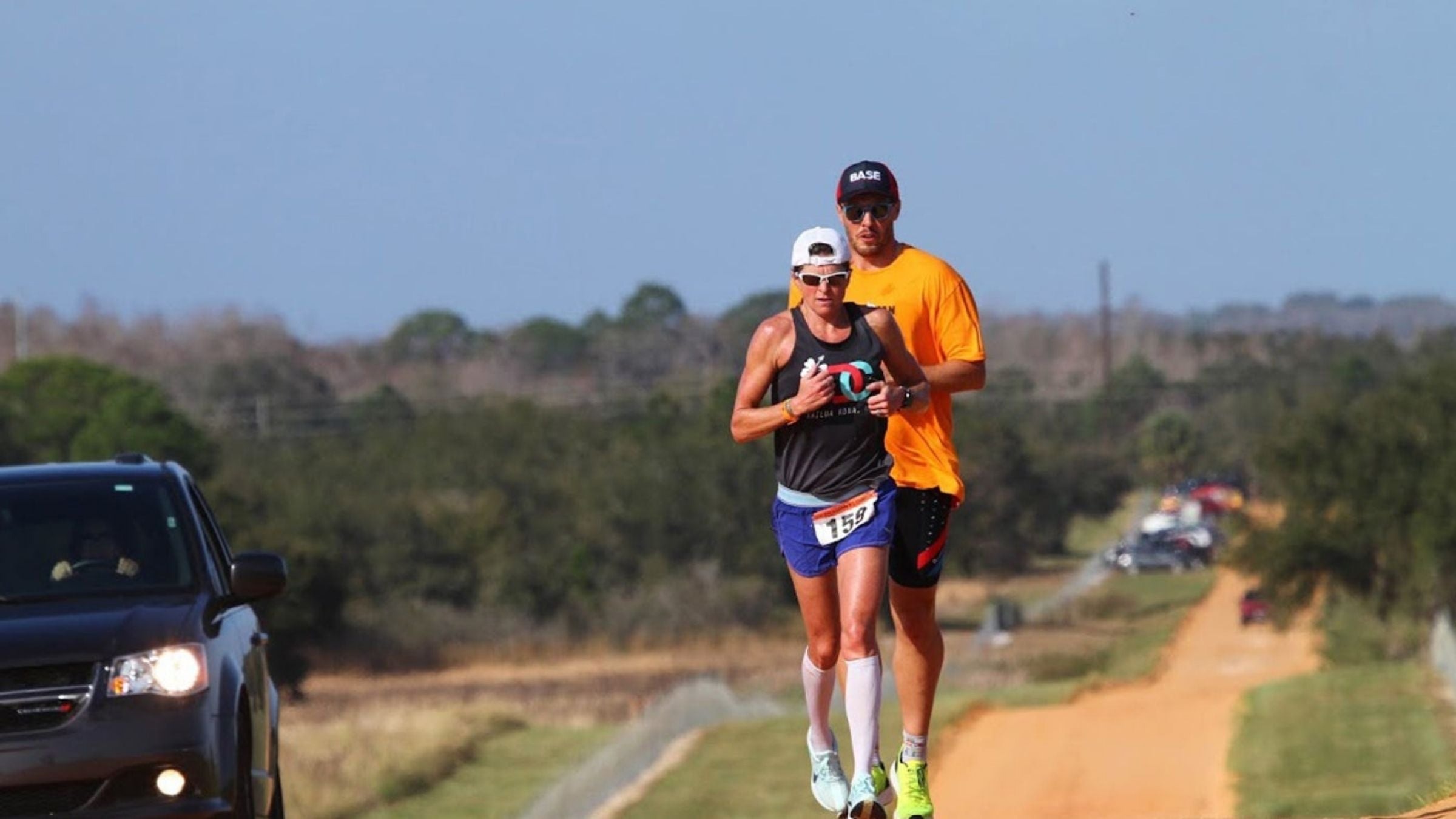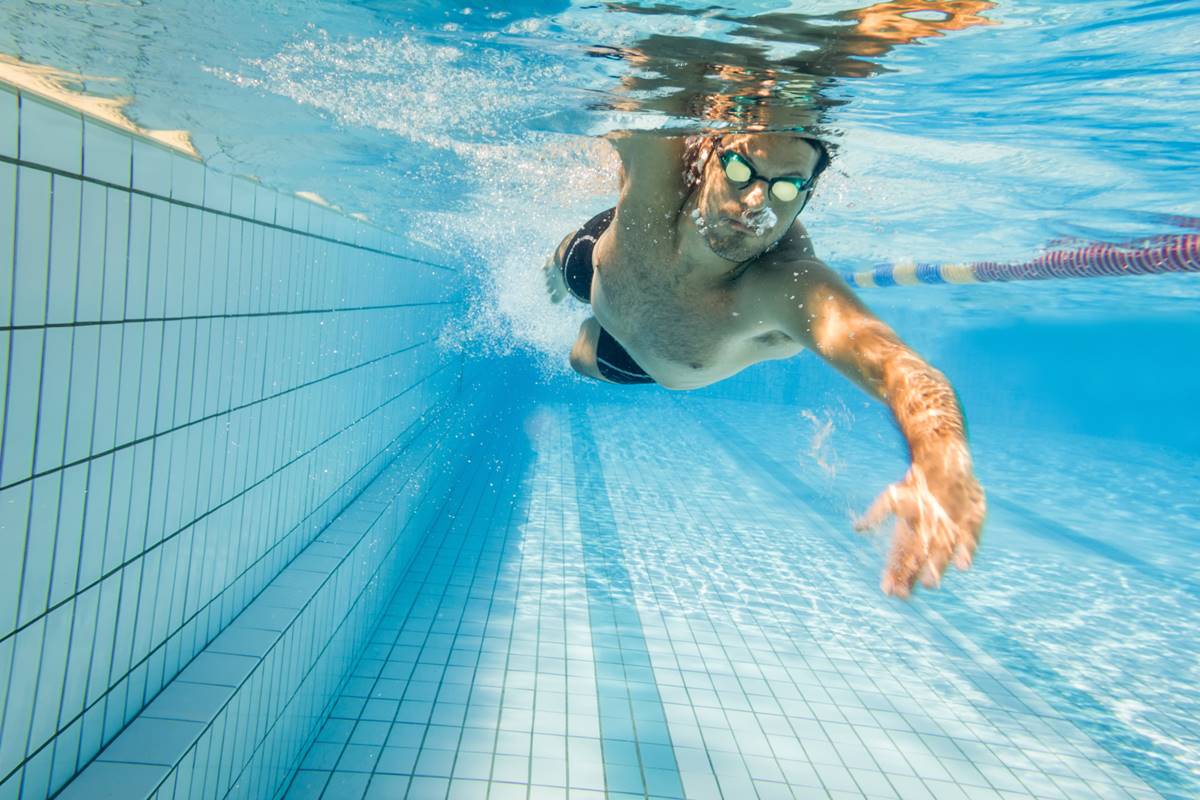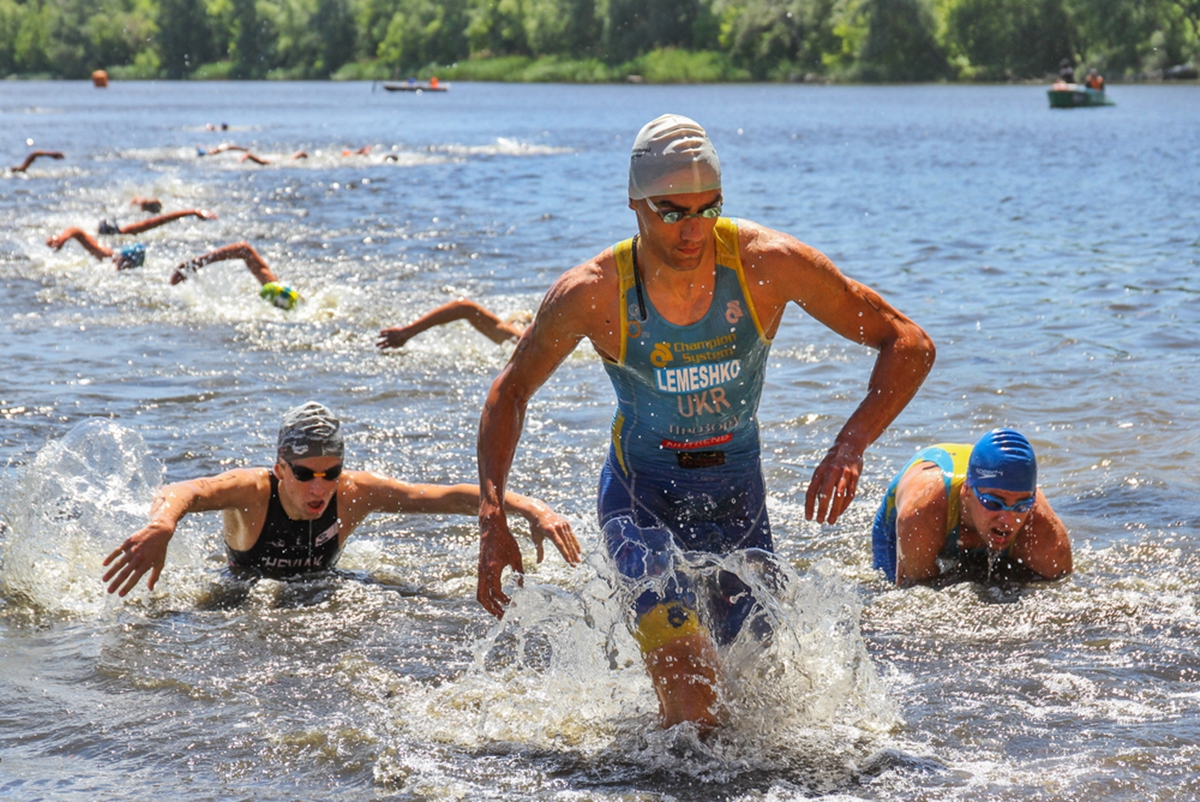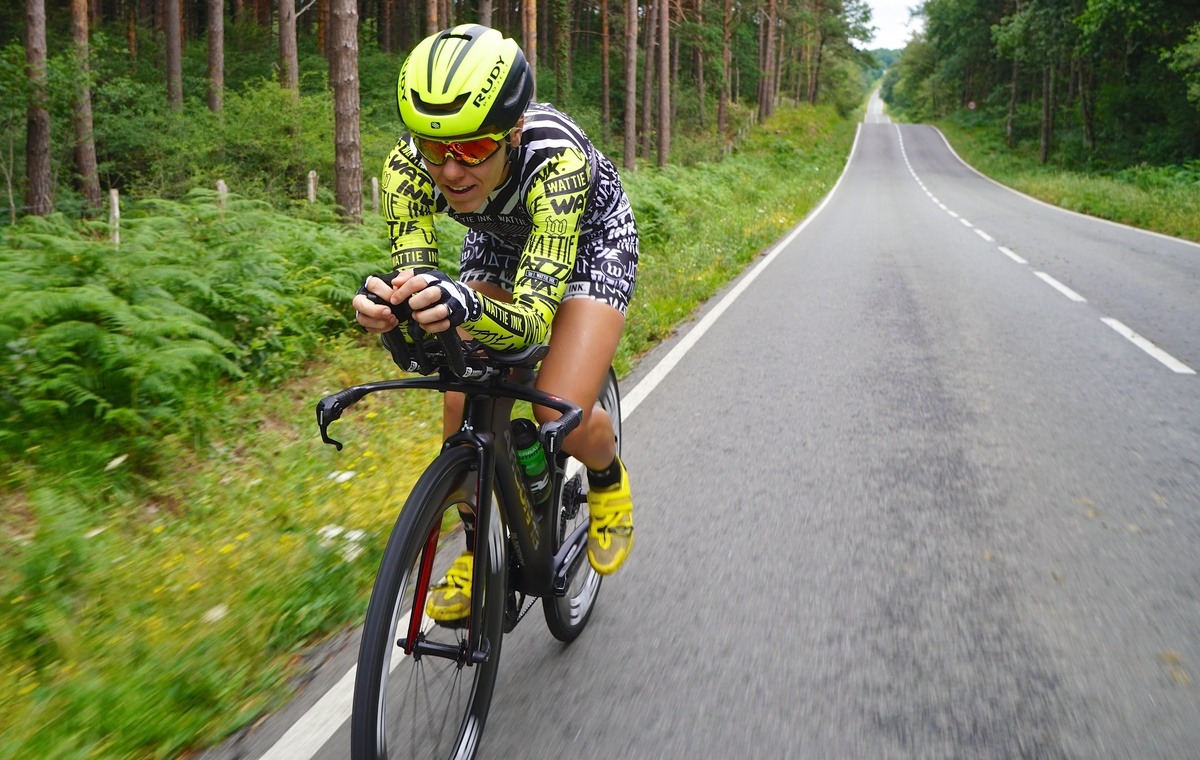Home>Misc>Featured>Why I’m Getting Stomach Cramps When Running In A Triathlon
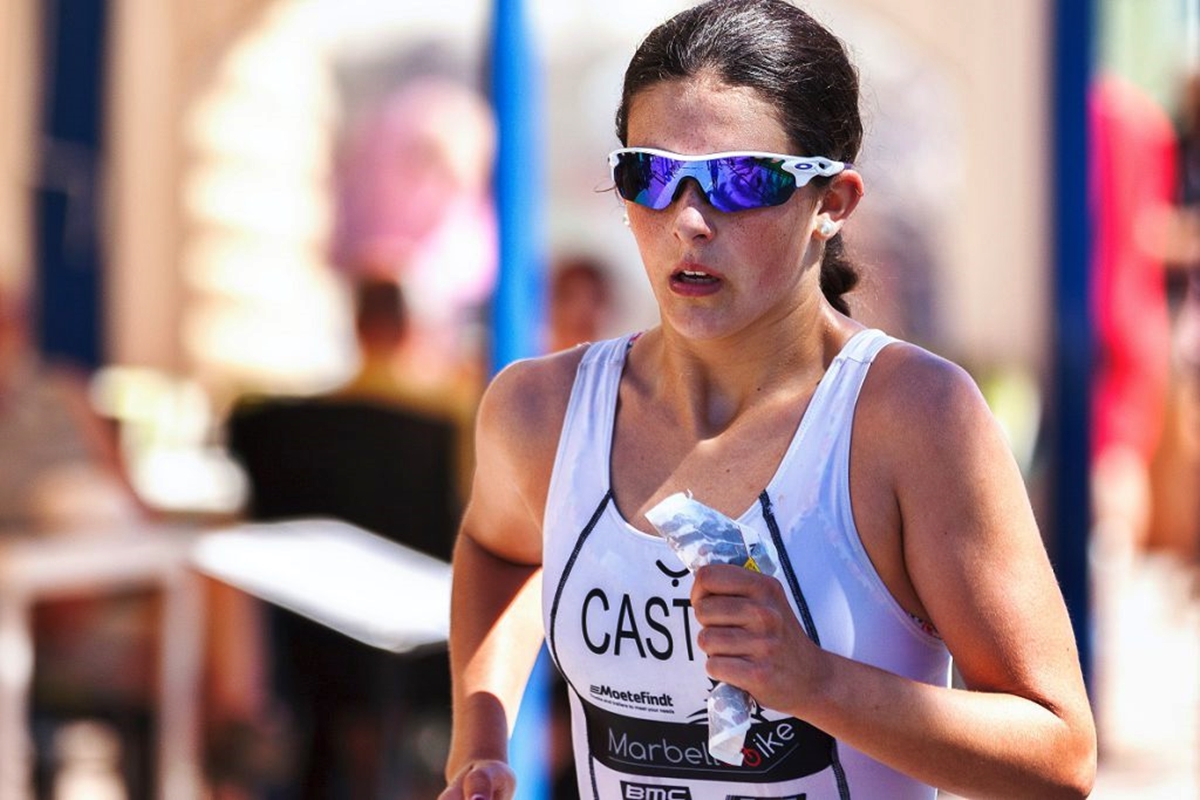

Featured
Why I’m Getting Stomach Cramps When Running In A Triathlon
Modified: August 19, 2023
Featured: Discover the reasons behind the stomach cramps you experience while running in a triathlon and find effective solutions to prevent them.
Introduction
Participating in a triathlon is a remarkable athletic endeavor that requires discipline, dedication, and physical endurance. However, for some athletes, running in a triathlon can be accompanied by an unpleasant and often painful experience: stomach cramps. These cramps can significantly hinder performance and leave athletes frustrated and discouraged. If you’ve ever experienced stomach cramps while running in a triathlon, you’re not alone.
Stomach cramps during running can occur for various reasons, and understanding the causes can help you find effective solutions to alleviate this discomfort. In this article, we will delve into the common causes of stomach cramps while running in a triathlon and explore strategies to prevent these cramps from occurring.
It’s important to note that stomach cramps can differ in intensity and duration, ranging from mild twinges to severe pain. The location of the cramps may also vary, with some athletes experiencing cramps in the upper abdomen, while others feel them in the lower abdominal region. Regardless of the specifics, finding the root cause of your stomach cramps can help you develop a personalized approach to address and prevent them.
While stomach cramps during running can be frustrating, it’s essential to stay positive and remember that there are ways to manage and reduce this discomfort. By implementing the strategies outlined in this article, you’ll be better equipped to overcome stomach cramps and optimize your performance in a triathlon.
Understanding Stomach Cramps in Triathlons
Before we delve into the potential causes and prevention strategies for stomach cramps during triathlons, it’s important to have a basic understanding of what exactly is happening in your body when you experience these cramps.
Stomach cramps, also known as abdominal cramps, are characterized by a sudden, sharp pain or discomfort in the abdominal area. When running in a triathlon, the repetitive impact and jostling of the internal organs can contribute to the onset of stomach cramps.
During intense physical activity, blood flow is redirected to the working muscles, including the legs, causing a reduction in blood flow to the digestive organs. This reduction in blood flow can lead to inadequate oxygen supply and impair digestion, resulting in cramping.
In addition to reduced blood flow, another factor that can contribute to stomach cramps during a triathlon is dehydration. Sweating and exertion can cause fluid loss, leading to a decrease in blood volume and electrolytes. This imbalance can affect muscle function, including the muscles of the digestive tract, potentially causing cramping.
Another possible contributing factor is improper breathing technique. Breathing shallowly or too rapidly while running can disrupt the balance of oxygen and carbon dioxide in the body, leading to an accumulation of lactic acid and triggering cramps.
It’s essential to recognize that stomach cramps during a triathlon can be a common occurrence for athletes of all levels. However, by understanding the underlying mechanisms and factors that contribute to these cramps, you can take proactive steps to minimize their occurrence and optimize your performance.
Common Causes of Stomach Cramps while Running
Stomach cramps during running can be attributed to various factors. Understanding these common causes can help you identify the root of your discomfort and take appropriate measures to prevent them in the future.
One common cause of stomach cramps is improper food intake before a race or training session. Consuming a meal that is high in fat or fiber can slow down digestion, leading to discomfort and cramping. Additionally, eating too close to the start of your run can divert blood flow away from the digestive system, exacerbating the problem. It’s crucial to experiment with different pre-run meal options and timing to find what works best for your body.
Dehydration is another frequent culprit behind stomach cramps. When your body is not adequately hydrated, electrolyte imbalances can occur, impacting the proper functioning of muscles, including those in the digestive system. Make sure to hydrate adequately before, during, and after your run, especially in hot and humid conditions.
Poor breathing technique can also contribute to stomach cramps while running. Breathing shallowly, rapidly, or inconsistently can disrupt the oxygen and carbon dioxide balance, leading to muscle fatigue and cramping. Focus on practicing controlled and rhythmic breathing during your runs to alleviate this issue.
Stress and anxiety can manifest physically in the form of stomach cramps. The anticipation and pressure associated with a triathlon can trigger tension and butterflies in the stomach. Engaging in relaxation techniques, such as deep breathing, meditation, and visualization exercises, can help reduce stress and promote a more relaxed state during your runs.
Lastly, certain medical conditions such as irritable bowel syndrome (IBS) or gastrointestinal disorders can contribute to recurring stomach cramps. If you suspect an underlying medical condition is causing your discomfort, it is essential to consult with a healthcare professional for proper diagnosis and treatment.
By understanding the common causes of stomach cramps while running, you can make informed decisions about your training, nutrition, and overall well-being. Implementing preventative measures and making necessary adjustments can help you minimize the occurrence of stomach cramps, allowing you to focus on enjoying your triathlon experience to the fullest.
Impact of Diet and Nutrition on Stomach Cramps
Your diet and nutrition play a significant role in your overall digestive health and can have a direct impact on the occurrence of stomach cramps while running in a triathlon. Making informed choices about your food intake can help prevent or alleviate this discomfort.
Eating a well-balanced and wholesome diet that provides an adequate amount of carbohydrates, proteins, and healthy fats is essential for optimal athletic performance and digestion. Foods that are rich in fiber, such as fruits, vegetables, and whole grains, can promote healthy digestion, but consuming large amounts of fiber before a run can lead to stomach cramps. Experiment with your pre-run meals to find a balance that works for you.
Hydration is crucial to prevent dehydration-induced stomach cramps. Ensure that you are properly hydrated before, during, and after your training sessions and races. Water is essential, but electrolytes, such as sodium and potassium, are also necessary to maintain proper muscle function and electrolyte balance. Electrolyte-rich sports drinks or electrolyte tablets can be helpful in replenishing lost minerals during prolonged or intense exercise.
Avoiding fatty and greasy foods before a run is recommended as they can slow down digestion and cause discomfort. Similarly, spicy foods may irritate the digestive system, leading to stomach cramps. Opt for light, easily digestible meals or snacks that provide sustained energy without causing digestive distress.
Timing your meals is also crucial. Eating too close to your training session or race can divert blood flow away from the digestive system, leading to inadequate digestion and discomfort. Aim to eat a meal or snack at least 2-3 hours before running, allowing sufficient time for digestion.
It’s important to listen to your body and pay attention to any specific food triggers that may contribute to stomach cramps. Keep a food diary to track your meals and note any discomfort or reactions. This can help you identify specific foods that may be causing issues and allow you to make necessary adjustments to your diet.
Incorporating probiotic-rich foods, such as yogurt, kimchi, or sauerkraut, can also promote a healthy gut and aid digestion. Probiotics help maintain a balance of beneficial bacteria in your intestines, which can improve overall digestion and reduce the likelihood of experiencing stomach cramps.
By adopting a mindful approach to your diet and nutrition, you can proactively manage your stomach cramps during triathlons. Pay attention to the types of foods you consume, stay hydrated, and experiment with different meal timings to find what works best for your body. Remember, finding the right balance will not only help prevent stomach cramps but also optimize your performance in a triathlon.
Strategies to Prevent Stomach Cramps during a Triathlon
Experiencing stomach cramps during a triathlon can be a frustrating setback, but there are several strategies you can implement to help prevent these cramps and optimize your performance. Here are some effective approaches to consider:
1. Gradually increase training intensity: Sudden spikes in training intensity can put unnecessary stress on your body, including the digestive system. Gradually increase the intensity and duration of your training sessions to allow your body to adapt and minimize the risk of stomach cramps.
2. Proper warm-up: A thorough warm-up routine before running can help prepare your muscles and digestive system for the upcoming activity. Incorporate dynamic stretches and gentle exercises to increase blood flow to the abdominal area, promoting optimal digestion and reducing the chances of cramping.
3. Mindful breathing: Ensure that you are using proper breathing techniques while running. Take slow, deep breaths from your diaphragm to oxygenate your muscles and prevent the build-up of lactic acid, which can contribute to stomach cramps.
4. Experiment with pre-race nutrition: Pay attention to your pre-race meal choices and timing. Focus on consuming easily digestible and balanced meals that provide sustained energy without causing digestive distress. Remember to give yourself ample time to digest before the race starts.
5. Hydration during training and races: Proper hydration is crucial to prevent dehydration-induced stomach cramps. Drink water or electrolyte-rich fluids regularly before, during, and after your training sessions and races. Listen to your body’s thirst cues and adjust your fluid intake accordingly.
6. Avoid high-fiber and fatty foods: Foods that are high in fiber or fat can slow down digestion and increase the risk of stomach cramps. Opt for easily digestible meals and snacks that provide the necessary nutrients without adding unnecessary strain to your digestive system.
7. Manage stress and anxiety: Stress and anxiety can manifest physically, including as stomach cramps. Engage in relaxation techniques such as deep breathing, meditation, or visualization exercises to help reduce stress levels and promote a more relaxed state during your races.
8. Consult with a healthcare professional: If your stomach cramps persist despite implementing preventative measures, it may be beneficial to consult with a healthcare professional. They can help identify any underlying medical conditions or provide additional guidance on preventing and managing stomach cramps.
By incorporating these strategies into your training and race-day routine, you can significantly reduce the chances of experiencing stomach cramps during a triathlon. Remember, prevention is key, and taking proactive steps to optimize your digestion and overall well-being will enhance your performance and enjoyment in this challenging athletic endeavor.
Hydration and its Role in Stomach Cramps
Proper hydration is not only important for overall athletic performance but also plays a crucial role in preventing stomach cramps during a triathlon. Inadequate hydration can lead to dehydration, electrolyte imbalances, and compromised muscle function, all of which can contribute to the onset of stomach cramps. Understanding the importance of hydration and implementing effective strategies can help you maintain optimal fluid balance and minimize the risk of cramping.
During physical exertion, especially in hot and humid conditions, your body loses water and electrolytes through sweat. This fluid loss can lead to a decrease in blood volume, affecting the delivery of oxygen and nutrients to the muscles, including those in the digestive system. Dehydration can also disrupt the balance of electrolytes, such as sodium, potassium, and magnesium, which are essential for proper muscle function.
When the body is dehydrated, the digestive process may become compromised. Reduced blood flow to the digestive organs can result in inadequate oxygen supply, impaired digestion, and an increased likelihood of stomach cramps.
The key to preventing dehydration and subsequent stomach cramps is to maintain proper hydration levels throughout your training and triathlon races. Here are some strategies to help you stay properly hydrated:
1. Pre-hydrate: Start your training sessions or races well-hydrated by drinking fluids in the hours leading up to your event. Aim to consume approximately 16-20 ounces (473-590 ml) of water or a sports drink a few hours before you start running.
2. Hydrate during exercise: During your triathlon, ensure you have access to fluids at regular intervals. Drink water or electrolyte-rich beverages to maintain your fluid balance. The exact amount will vary depending on factors such as your sweat rate, duration of exercise, and environmental conditions. A general guideline is to drink about 6-8 ounces (177-237 ml) of fluid every 15-20 minutes to stay adequately hydrated.
3. Monitor urine color: Pay attention to the color of your urine as a rough indicator of your hydration status. Ideally, urine should be pale yellow or straw-colored. Darker urine may indicate dehydration, while colorless urine may suggest overhydration. Aim for a balance and strive for a consistent, light yellow color.
4. Replenish electrolytes: In addition to water, it’s important to replenish electrolytes lost through sweat, especially during longer or intense workouts. Consider consuming a sports drink or electrolyte tablets that provide sodium, potassium, and other essential minerals to maintain electrolyte balance.
5. Post-exercise hydration: After your triathlon, continue to hydrate to replenish any fluid and electrolyte losses. Drinking water or a recovery drink that includes both carbohydrates and electrolytes can aid in rehydration and muscle recovery.
Remember that hydration needs are individual, and it’s crucial to listen to your body’s cues. Thirst should not be your sole indicator of hydration needs, as it may not always accurately reflect your actual fluid requirements. Develop a hydration plan that suits your specific needs and adjust accordingly based on factors such as weather conditions, workout intensity, and race duration.
By prioritizing hydration and implementing effective strategies, you can maintain proper fluid balance, support optimal digestion, and minimize the occurrence of stomach cramps during your triathlon races.
Breathing Techniques to Alleviate Stomach Cramps
Proper breathing techniques can play a crucial role in alleviating stomach cramps while running in a triathlon. When done correctly, specific breathing techniques can help oxygenate your muscles, promote relaxation, and reduce the chances of experiencing cramps. Incorporating these breathing techniques into your training and race-day routine can make a significant difference in your performance and overall comfort.
1. Diaphragmatic Breathing: Also known as belly breathing or deep breathing, diaphragmatic breathing involves engaging your diaphragm instead of shallow chest breathing. Start by placing one hand on your abdomen and the other on your chest. As you inhale, focus on expanding your belly, allowing it to rise. Exhale slowly, allowing your belly to fall. Diaphragmatic breathing helps to promote relaxation, lower stress levels, and alleviate muscle tension that can contribute to stomach cramps.
2. Rhythmic Breathing: Rhythmic breathing involves synchronizing your breath with your running cadence. This technique can help regulate your breathing pattern and reduce the likelihood of shallow or erratic breaths that may contribute to cramping. Match your inhales and exhales with your foot strikes, such as inhaling for three steps and exhaling for three steps. Experiment with different ratios to find a pattern that feels comfortable and natural to you.
3. Slow Exhale Technique: This technique involves intentionally prolonging your exhales to stimulate the body’s relaxation response. Breathe in normally but extend your exhales by actively pushing the air out slowly. Focus on releasing tension with each exhale and allow your body to relax. Slow exhales can help reduce the accumulation of lactic acid, lower muscle fatigue, and minimize the risk of stomach cramps.
4. Recovery Breathing: Implement recovery breathing exercises during short breaks or walking intervals in your training or race. Take slow, deep breaths in through your nose and exhale gently through your mouth. Visualize releasing any tension or discomfort with each exhale. This technique can help restore the balance of oxygen and carbon dioxide in your body, reducing the likelihood of muscle fatigue and cramping.
5. Practice Mindful Breathing: Incorporate mindfulness into your breathing by focusing your attention on each breath while running. Pay attention to the sensation of the breath entering and leaving your body. Mindful breathing can help redirect your focus away from any discomfort or tension in your stomach and promote a sense of calm and relaxation.
6. Breathe from Your Belly: Many runners tend to take shallow breaths from their chest, which can hinder the oxygen supply to your muscles and contribute to cramping. Make a conscious effort to breathe deeply from your belly, allowing it to expand with each inhale. This technique ensures that you are taking in sufficient oxygen to support your muscles and reduce the likelihood of cramps.
Remember to practice these breathing techniques during your training sessions to familiarize yourself with them before your triathlon races. Incorporate them into your pre-race warm-up routine and utilize them whenever you feel tension or discomfort in your stomach. By mastering these breathing techniques, you can optimize your oxygen intake, reduce muscle tension, and alleviate stomach cramps while running in a triathlon.
Warm-up and Stretching Exercises for Stomach Cramp Prevention
Proper warm-up and stretching exercises are crucial for preventing stomach cramps during a triathlon. Taking the time to warm up your muscles and increase flexibility can help reduce the risk of cramping and improve your overall performance. Here are some effective warm-up and stretching exercises to incorporate into your pre-race routine:
1. Light Jogging: Start your warm-up with a light jog to gradually increase your heart rate and blood circulation. This will warm up your muscles and prepare them for more intense activity. Begin at an easy pace and gradually build up your speed to a comfortable level.
2. Dynamic Stretches: Dynamic stretching involves moving through controlled, flowing movements that gradually increase your range of motion and warm up your muscles. Perform exercises such as leg swings, arm circles, high knees, and walking lunges. These movements help improve flexibility and prepare your muscles and joints for the demands of running.
3. Hip Openers: Tight hip flexors can contribute to inefficient running form and potentially lead to stomach cramps. Incorporate exercises that target hip flexibility, such as hip circles, leg swings, or hip openers like standing or seated pigeon pose. These exercises will help loosen up your hip muscles, reducing tension in the abdominal area.
4. Side Stretches: Often overlooked, side stretches can help alleviate tension in the abdominal area and promote better breathing mechanics. Stand tall with your feet hip-width apart and reach one arm up and over to the opposite side, creating a gentle stretch along the side of your body. Hold for 15-30 seconds and repeat on the other side.
5. Deep Breathing: Incorporate a few moments of deep breathing exercises into your warm-up routine. Close your eyes, stand tall, and take slow, deep breaths, filling your lungs fully. Exhale slowly and release any tension with each breath. This will help relax your body and promote proper breathing during your race.
6. Core Activation: Engaging your core muscles before running can provide stability and support to your abdomen, potentially reducing the occurrence of stomach cramps. Perform exercises such as planks, bird dogs, or standing core twists to activate your core muscles and improve overall stability during running.
7. Light Dynamic Running: After completing the warm-up exercises, perform a short segment of light, dynamic running. Gradually increase your pace to mimic race intensity, ensuring that you maintain good form and focus on relaxed breathing. This final segment allows your body to prepare for the demands of the triathlon while minimizing the risk of sudden muscle cramps.
Remember, warm-up and stretching exercises should not be rushed. Aim to spend at least 10-15 minutes on your warm-up routine before starting your race. Listen to your body and modify exercises as needed to suit your individual flexibility and fitness level. By incorporating these warm-up and stretching exercises into your pre-race routine, you can help prevent stomach cramps and enhance your performance in a triathlon.
Medical Conditions and Stomach Cramps during Running
While stomach cramps during running are often attributed to factors like hydration, nutrition, and breathing techniques, it’s important to recognize that certain underlying medical conditions can also contribute to the occurrence of stomach cramps. Understanding these conditions and seeking appropriate medical guidance can help determine the most effective management strategies and alleviate discomfort during your running sessions and triathlons.
1. Gastrointestinal Disorders: Conditions such as irritable bowel syndrome (IBS), inflammatory bowel disease (IBD), or gastroesophageal reflux disease (GERD) can cause recurrent abdominal pain, bloating, and cramping during physical activity. If you have been diagnosed with any gastrointestinal disorder, it is essential to work closely with a healthcare professional to develop an individualized management plan that includes appropriate dietary modifications, medications, and other therapeutic interventions to manage your symptoms.
2. Food Intolerances or Allergies: Some individuals may experience stomach cramps and other gastrointestinal discomfort due to specific food intolerances or allergies. Common culprits include lactose intolerance, gluten intolerance, or fructose malabsorption. Identifying and eliminating trigger foods from your diet, with the guidance of a registered dietitian or healthcare professional, can help prevent stomach cramps and optimize your running performance.
3. Exercise-Induced Gastrointestinal Distress: In some cases, strenuous physical activity, such as running in a triathlon, can trigger gastrointestinal distress and stomach cramps. This condition, commonly referred to as exercise-induced gastrointestinal syndrome (EIGS), can cause symptoms like abdominal pain, diarrhea, or nausea during or after exercise. Consulting with a healthcare professional can help identify potential triggers and develop strategies to manage and reduce the occurrence of these symptoms.
4. Hormonal Imbalances: Hormonal imbalances, particularly in female athletes, can contribute to stomach cramps during running. For example, conditions like endometriosis or menstrual-related disorders can cause pelvic pain and abdominal discomfort during physical activity. If you suspect hormonal imbalances may be contributing to your stomach cramps, it is advisable to consult with a healthcare professional who specializes in women’s health.
5. Other Medical Conditions: Various other medical conditions, such as kidney stones, urinary tract infections, or appendicitis, can present symptoms that include abdominal pain or cramping during physical activity. If you experience severe or persistent cramps, accompanied by other unusual symptoms or changes in bodily functions, it is essential to seek immediate medical attention to rule out any serious underlying conditions.
If you suspect that an underlying medical condition is contributing to your stomach cramps during running, it is important to consult with a healthcare professional. They can conduct a thorough evaluation, provide a proper diagnosis, and guide you in developing an individualized treatment plan. This approach will help address the specific underlying condition and minimize the risk of stomach cramps while participating in your triathlon races.”
Conclusion
Experiencing stomach cramps during running in a triathlon can be a frustrating and uncomfortable ordeal. However, by understanding the various factors that can contribute to these cramps and implementing preventative measures, you can significantly reduce their occurrence and optimize your performance. From proper warm-up and stretching exercises, to mindful breathing techniques and adequate hydration, there are numerous strategies that can help alleviate stomach cramps and improve your overall running experience.
It’s important to remember that stomach cramps can have multiple causes, ranging from improper nutrition and dehydration to underlying medical conditions. By listening to your body, paying attention to your nutrition and hydration, and seeking appropriate medical guidance when necessary, you can gain a better understanding of your individual circumstances and develop a personalized approach to prevent stomach cramps.
Remember, every athlete is unique, and what works for one person may not work for another. It may require some trial and error to find the strategies that work best for you. Stay patient, remain persistent, and adapt your approach as needed. Over time, you’ll be able to fine-tune your routine and minimize the risk of stomach cramps, allowing you to fully enjoy the challenges and rewards of participating in a triathlon.
Finally, prioritize your overall well-being and listen to your body’s signals. If you continue to experience persistent or severe stomach cramps despite implementing preventive measures, it’s essential to consult with a healthcare professional for a proper evaluation and diagnosis. They can help determine any underlying medical conditions or provide additional guidance tailored to your specific needs.
By incorporating the strategies outlined in this article, you’ll be better equipped to take control of stomach cramps and optimize your performance in a triathlon. Remember, running should be a source of joy and fulfillment, and with the right approach, you can overcome the challenge of stomach cramps and reach your full potential in your triathlon endeavors.
